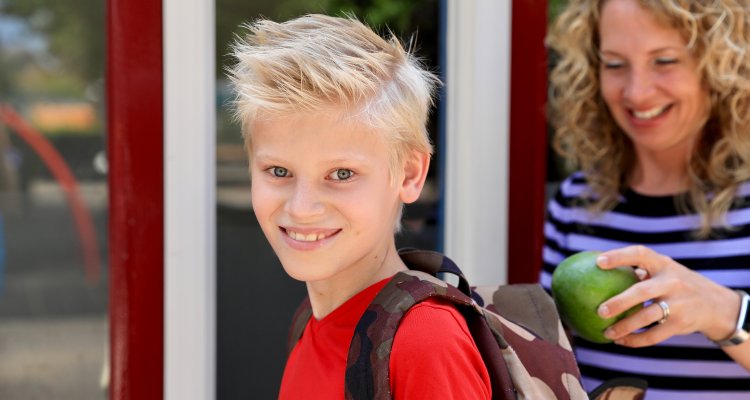
Project
Fruit and vegetables at school, naturally!
Developing a proven effective approach for primary schools and parents to increase the availability of fruit and vegetables at school. That is the goal of the research project: fruit and vegetables at school, naturally!
Only 1% of children eat the recommended amount of vegetables, and 5% consume the recommended amount of fruit. However, adequate consumption of vegetables and fruit is crucial from both a health and sustainability perspective. In order to eat an adequate amount fruit and vegetables, it is desirable that a child does this at different times during the day. Many opportunities are during school hours. Providing fruit and vegetables is the responsibility of the parents in nearly all schools in the Netherlands. In practice it appears that parents are not always able to meet this demand, though. However, schools require support to achieve this goal.
The project has spanned three years:
2017 Research into the wants, opportunities, success factors, and obstacles in providing fruit and vegetables for school. Research was conducted among parents, schools, and experts.
2018 Several strategies were examined more closely to determine whether they were effective ways to increase the availability of fruit and vegetables during the morning break at school. This related to presenting fruit and vegetables in a fruit bowl, offering a fruit and vegetable subscription, and encouraging bringing fruit and vegetables in an attractive personalised container.
2019 In the third and final year, the impact of standard fruit and vegetable days at schools was examined. Does this actually lead to an increased availability (and consumption) of fruit and vegetables during the morning break at school? During the third year, a toolkit will also be developed to support schools, and to inspire them to make fruit and vegetables a natural occurrence during the morning break.
During the term of the project, the project partners and the sounding board group will meet at least three times per year. The sounding board group consists of:
- Voedingscentrum (nutrition centre)
- Stichting Ouders en Onderwijs (parents and education foundation)
- HAS University of Applied Sciences Den Bosch
- Gezonde School Adviseurs (healthy school advisers)
- Smaaklessen support point & EU Schoolfruit
The project progress and plans are discussed during these meetings. The results of the different studies will also be shared with the stakeholders, and where possible immediately implemented in practice.
Publicaties
-
Groente en fruit op school, vanzelfsprekend! De rol van de ouders en school
-
Van patatzak naar fruitbak
-
Groente & fruit op in de ochtendpauze op school
-
Groente en fruit op school, vanzelfsprekend!
-
Bedrijfsleven opgeroepen samen op te trekken bij voedseleducatie
-
Exploring feasibility and impact of different approaches to enhance children’s fruit and vegetable consumption
-
Groente en fruit op school, vanzelfsprekend!
-
Strategies to increase primary school children's fruit and vegetable intake during 10AM snack time
Appetite (2021), Volume: 163 - ISSN 0195-6663